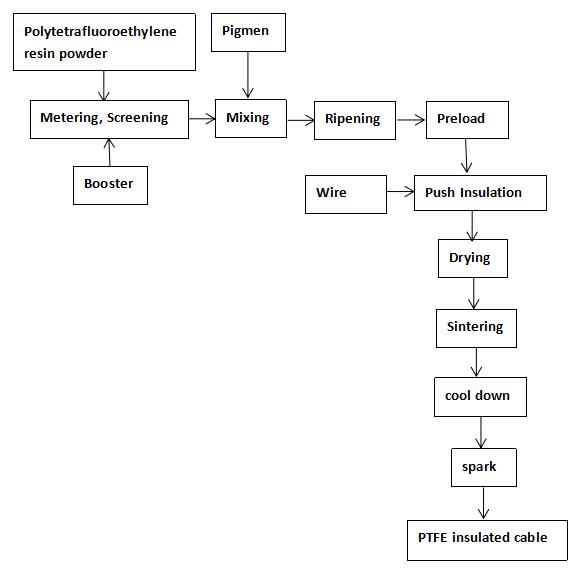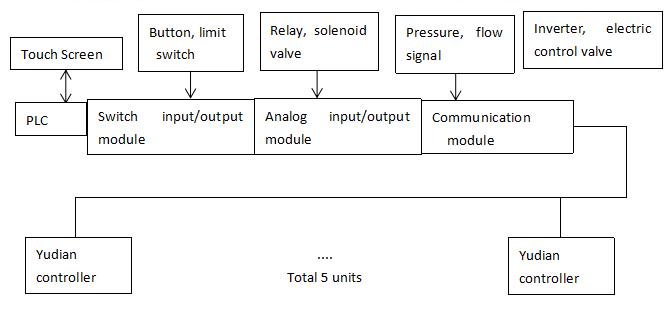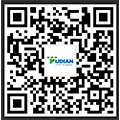Applications of Pid Controller AI-526
Abstract: Extrusion molding is method in the field of polymer processing which has the most production variety, high productivity, strong adaptability, wide application and the largest production yield. This paper is based on the practice and summary of field technicians. It introduces the heating and cooling dual output function of Yudian intelligent controller AI-526 to achieve precise control of cable extruder.
Keywords: Intelligent PID Controller, Cable extruder, Cable equipment
1. Principle of cable extrusion process
The plastic insulation and sheathing of wire and cable is carried out by continuous extrusion, and the extrusion equipment is generally a single screw extruder. Before the plastic is extruded, check the moisture or other debris of plastic, then preheat the plastic and add it to the hopper. During the process of extrusion , the plastic loaded into the hopper enters the barrel by means of gravity or feeding screw, and under the action of the thrust of the rotating screw, it continuously advances, gradually moving from the preheating section to the homogenization section; meanwhile, plastic is agitated and squeezed by the screw, and is transformed into a viscous flow state by the external heat of the barrel. The shear friction between the plastic and the device forms a continuous and uniform flow in the groove. Under the process, the plastic changes from a solid state to a molten plastic object, and then pushes or stirs the screw to push the completely plasticized plastic into the machine head; the flow into the machine head passes through the core. The annular gap between the sleeve is extruded around the conductor to form a continuous dense insulating or sheathing layer which is then cooled and solidified to form a wire and cable product.

Figure 1 Principle process of cable extrusion
2 Specific Applications of Yudian Pid Controller AI-526
2.1 Introduction and requirements of Users: Dongguan Weidalong Machinery Co., Ltd. is a well-known enterprise in the field of wire and cable. It has been engaged in the design and manufacture of professional wire and cable equipment for nearly 25 years and is one of the leading companies in local cable equipment.
The cable extruder refers to temperature controlling is mainly composed of two parts: the barrel and the head. Each part is composed of 3 to 7 temperature zones, and the setting value of each temperature zone can be different, which makes the extruder more complicated than the average machine. The temperature difference between the screw rotation and the heat generated by the material friction will cause interference to the controlling effect. The direct effect is that it is difficult to control temperature accurately, and the temperature fluctuations of each hot zone are larger, easy to make temperature overshoot or insufficient, resulting in unqualified final product which can not meet the customers requirements. The OMRON controller E5EZ used by the customer has a general control effect. The customer wants to further improve the temperature control accuracy and stability of the equipment, and decided to use the AI-526 instead.
2.2 Implementation plan and analysis of application: According to the customer's requirements, the model selected for the customer is AI-526EGL1S (V8.28). The functions of the model are as below: 0.25%FS, dual PID, heating and cooling output, support communication protocols for AIBUS and MODBUS. Based on the functions, the PLC is designed to work with the controllers. The specific process is as below: When the system starts, it enters into the heating state, and then temperature sensor (thermocouple or thermal resistance) detects the temperature analog signal and sends it to the instrument. After reading the temperature, the measured value is compared with setting value to obtain a deviation. According to the PID adjustment algorithm built in AI-526, the corresponding control part is obtained to control the solid state relay, thereby adjusting the heating power of the electric heater . When the temperature reaches the setting value, the heating is stopped. At this time, the PLC obtains the signal by means of RS485 communication connection, and uses the signal to control the operating state of the system. Due to the shearing of the screw, the excessive heat caused by the friction will be generated. In order to avoid plastic to being decomposed, scorched or shaped, when the temperature exceed, the cooling function of the AI-526 is activated. The signal controls the satrt of air cooling system, causing the temperature to drop to the setting value. Through the coordinated control of the heating and cooling output, a closed-loop control of the temperature analog is formed to reach value the customer expected. In the whole system, for example, the logic control of the switching, the sequence control, and the collection of other analog signals such as pressure and flow are given to the PLC.

Figure 2 Structure of the extruder control system
2.3 Use effect
After the implementation of the program, the on-site technicians made the self-tuning before using the controllers for the first time, but the actual control effect was overshoot for 5℃, which did not reach the customer's expectation, because the cable extruder was between the various temperature zones. The distance is very close, which is easy to cause mutual interference, so firstly the parameters of self-tuning are not easy to define. By several testings, the value of P is increased, and the I is increased (each adjustment value is 5%-10%). After several adjustments, the temperature is finally controlled stably at a deviation of about 1℃, and the control effect can meet the customers’ expectations.
The five groups of PID parameters that the customer finally adjusted are as follows (for reference only):
PID Parameters for Heating | PID Parameters for Cooling | |||||
P | I | D | P | I | D | |
Temperature zone 1 | 6 | 104 | 31.2 | 11 | 52 | 18.3 |
Temperature zone 2 | 10 | 164 | 49.2 | 23 | 47 | 22.5 |
Temperature zone 3 | 9 | 148 | 44.4 | 21 | 43 | 21.2 |
Temperature zone 4 | 9 | 130 | 39 | 20 | 50 | 21.7 |
Temperature zone 5 | 9 | 152 | 42 | 21 | 46 | 20.9 |
3. Summary
The replacement of Omron controller E5EZ by Yudian's AI-526 temperature controller further improves the accuracy and stability of the temperature control of the cable extruder equipment. The whole system is safer, more reliable and stable. AI-526 is easy to operate because of full-featured, cost-effective and practical ability and the price is more competitive compared to the original instrument.



